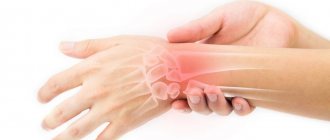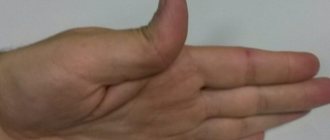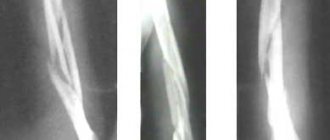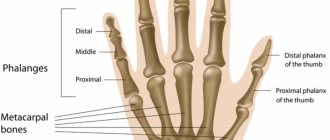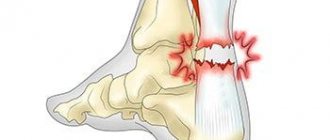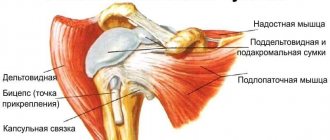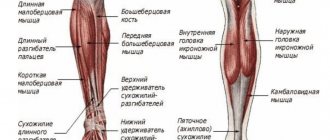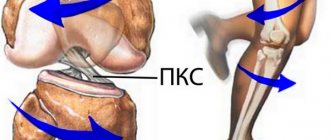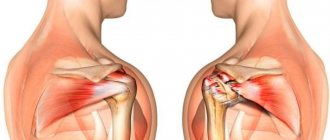Why surgery is needed
Ligamentous injuries accompanied by tendon rupture are among the most severe.
Tendons consist of a special tissue formed from tenocytes, cells that do not have the ability to regenerate. Therefore, if they rupture, the problem can be corrected without losing the functionality of the ligamentous apparatus only through surgical intervention. In this case, it makes no sense to apply a fixing bandage or plaster. At the same time, timely contact with a traumatologist is important. Over time, the tendon endings at the rupture sites thicken, join the adjacent tissues, and 2–3 months after the injury, they are very difficult to isolate and connect to each other. That is, the sooner you see a doctor, the higher the chances of restoring full functionality of the limb.
RECONSTRUCTION
Help for such tendon lesions should be immediate. Ideally, surgery should be performed on the same day as the incident that resulted in the injury to the fingers. If there is such a possibility (tendon fusion in the first 24 hours), the suture will be primary.
Delayed flexor suture is used:
- for cases of delayed seeking help;
- in case of heavy contamination of the area where the fingers are damaged;
- in case of severe swelling, infection, inflammation and other prohibitive conditions for operating on the flexors.
Urgent emergency or primary finger surgery is performed within 45–60 minutes. The key task (and the main difficulty) is to find the “spreading” ends of the tendons and sew them exactly end to end. The suture must be done in a zigzag - this reduces the risk of tissue scarring and eliminates the threat of tightening in the area of flexor damage - it can interfere with the proper fusion of the tendons.
When treatment of the flexor tendons is delayed, so-called tendoplasty is performed. This is a two-stage reconstruction that is carried out after the wound has healed. The start of plastic surgery is on the 12th–20th day after healing of the damage.
Rehabilitation stages
In both cases, at the end of the surgical procedure, a clamp is applied to the fingers. Before fusion of the tendons, the traumatologist can apply a cast (this will prevent severe divergence of the tendons, but will not solve the problem of their fusion).
The finger retainer is worn for up to 3 weeks. After which you can begin to actively develop the flexor tendons after damage. It is important to observe the regularity of the exercises, but not to exaggerate the maximum permissible load (so that the seams do not come apart and the seal of the tendons located in a special “channel” that ensures their sliding) is not broken.
Tendon reconstruction at the GMS clinic
At the surgical traumatology center at GMS Hospital, surgical treatment is performed by experienced orthopedic traumatologists using modern microsurgical technologies. Specialists will thoroughly examine the damaged area and select the most effective intervention tactics.
We focus on obtaining maximum results, trying to achieve complete restoration of the functionality of the damaged area. The use of modern arthroscopic struts when applying a tendon suture provides the following advantages:
- targeted accuracy of intervention;
- minimal trauma to surrounding tissues;
- absence of bleeding and surgical complications;
- performing the intervention in an outpatient setting;
- fast recovery.
The prognosis of the operation directly depends on the nature of the injury, its severity, the statute of limitations and the qualifications of the trauma surgeon. When a tendon ruptures, the muscle contracts and the tendon end slips out of the wound. Finding it and connecting it in the least traumatic way, while maintaining the functionality of the ligamentous and muscular apparatus, is a very difficult task that GMS Hospital traumatologists have been successfully coping with for many years.
Cost of tendon repair services
The prices indicated in the price list may differ from the actual prices. Please check the current cost by calling +7 495 104 8605 (24 hours a day) or at the GMS Hospital clinic at the address: Moscow, st. Kalanchevskaya, 45.
| Name | Price |
| Stitching (refixation) of extensor tendons in case of an old rupture | RUB 178,836 |
| Stitching (refixation) of extensor tendons in case of fresh rupture | RUB 129,234 |
| Stitching (refixation) of extensor tendons in case of fresh rupture - with tendon retraction | RUB 149,058 |
| Stitching (refixation) of flexor tendons in case of rupture | RUB 129,234 |
| Stitching (refixation) of flexor tendons in case of an old rupture | RUB 178,836 |
| Stitching (refixation) of flexor tendons in case of fresh rupture - with tendon retraction | RUB 149,058 |
Dear Clients! Each case is individual and the final cost of your treatment can only be found out after an in-person visit to a GMS Hospital doctor. Prices for the most popular services are indicated with a 30% discount, which is valid when paying in cash or by credit card. You can be served under a VHI policy, pay separately for each visit, sign an agreement for an annual medical program, or make a deposit and receive services at a discount. On weekends and holidays, the clinic reserves the right to charge additional payments according to the current price list. Services are provided on the basis of a concluded contract.
Plastic cards MasterCard, VISA, Maestro, MIR are accepted for payment. Contactless payment with Apple Pay, Google Pay and Android Pay cards is also available.
Bloodlessness of intervention
Fast healing and short rehabilitation period
Minimal trauma to surrounding tissues
Targeted intervention accuracy
Make an appointment We will be happy to answer any questions Coordinator Oksana
Indications for surgical treatment are:
- tear - damage to half or most of all tendon fibers;
- complete break;
- consequences of old injuries - limited muscle functionality, etc.
The most common causes of tendon rupture are cut, punctured or chopped wounds, as well as injuries to the extremities when caught in a moving mechanism. Damage is also possible as a result of a closed injury.
Make an appointment with a traumatologist if you are concerned about:
- pain that intensifies when trying to move a hand, finger, or other injured area;
- limitation of range of motion;
- inflammation at the site of injury - swelling, swelling, redness, fever.
The severity of clinical signs depends on the degree of tendon damage; with a complete rupture, there is a sharp limitation of voluntary movements, severe pain, decreased joint stability, etc.
Treatment of damage to the extensor tendons of the fingers
In the treatment of injuries to the extensor tendons of the fingers, not only a surgical method is used, but also a conservative one, in contrast to injuries to the flexor tendons. Damage at the level of the fingers can be cured without surgery, but with long-term wearing of a plaster or plastic splint. Damage to the tendon at the level of the metacarpal bones, wrist and forearm, unfortunately, can only be treated surgically. Because the ends of a torn or cut tendon need to be stitched. Your doctor will explain the need and benefits of various treatments for extensor tendon injuries.
Preparation, diagnostics
Diagnosing a tendon rupture is not difficult. Because it is accompanied by movement disorders characteristic of one or another muscle lesion. To visualize the site of damage and determine the degree of its severity, the following is prescribed:
- radiography in different projections;
- CT or MRI with layer-by-layer tissue scanning;
- Ultrasound;
- arthroscopy.
Before applying a tendon suture, you will need to take blood and urine tests and consult with an anesthesiologist.
First aid and diagnostic methods
If the hand is severely injured, it is necessary to urgently apply a pressure bandage and apply a cold object or ice pack to the site of injury. The doctor performs initial treatment of the wound, rinses it with an antiseptic, and stops the bleeding. A tetanus vaccination and antibiotics are required to prevent infection. During the examination, our specialist will ask the patient to perform flexion and extension movements of the fingers. If a tendon injury is diagnosed, surgery is necessary within the first 15 days after the injury, otherwise it will be impossible to restore the flexion function of the fingers. In the absence of traumatic injuries, it is necessary to determine the level of performance of the circulatory system and the nervous system, for which, at the Osnova clinic, the patient takes a blood test and undergoes angiography and electroneurography procedures.
How is tendon repair performed?
Applying a tendon suture is the simplest, safest and most effective (provided that the operation is performed by an experienced doctor) way to restore damage. Basic requirements for a tendon suture:
- the seam should be as simple as possible;
- when applying a suture, it is necessary to use as little suture material as possible;
- the suture should not disrupt the tendon blood supply;
- the seam should reliably fasten the ends of the tendons, without the possibility of them breaking apart.
There are different methods for applying a tendon suture, depending on the location of the rupture, the general condition of the adjacent tissues, for example, the suture according to Cuneo, Rozov, etc. Depending on the time of application, the following types of sutures are distinguished:
- primary - applied in the first hours after the injury;
- secondary (early and late) - applied several weeks after injury.
The doctor isolates the ends of the tendons at the site of the rupture, tightens them, suturing them in a way that will ensure the maximum result in this situation. In addition, during the intervention, the traumatologist restores not only the tendon, but also its sheath. After manipulation, a sterile bandage is applied to the wound. The operation is performed under local, epidural or general anesthesia.
You have questions? We will be happy to answer any questions Coordinator Tatyana
Treatment of damaged tendons
The tendons themselves will not be able to heal due to the lack of contact between the damaged ends. To maximize the restoration of motor functions of the fingers, urgent surgical intervention is necessary. To effectively restore tendons, our clinic’s specialists use a type of operation called “tendon suture,” which is performed using conduction anesthesia. During the operation, the skin on the arm is cut with a zigzag incision and a special tendon suture is made, which eliminates tissue deformation and scarring of the suture with surrounding tissues.
Features of the rehabilitation period
The duration of the recovery period depends on the type of surgery. If the operation was performed using an open approach, healing takes an average of 10–14 days; after arthroscopy, it takes about 3–5 days. Rehabilitation measures are aimed at quickly restoring the functionality of the tendon, muscle and joint apparatus. Full return of motor functions may take 1–4 months, depending on the degree of damage (whether the ligaments or flexor muscles were injured, or one or more tendon bundles had to be surgically restored) and the technique used. During rehabilitation, you must carefully follow the doctor’s recommendations in order to achieve complete restoration of the functionality of the tendon apparatus in a short time.
